Title: “F4U Corsair: The Warbird’s Evolution and Combat Triumphs in the Pacific”
Introduction: The Chance-Vought F4U Corsair, with its distinctive bent wings, holds a lasting image in the annals of World War II aviation. Immortalized by the TV series Black Sheep Squadron, this warbird became synonymous with the daring exploits of the United States Marine Corps (USMC) in the South Pacific. In this exploration of the F4U Corsair’s history, we delve into its development, challenges, and its pivotal role in combat, highlighting the contributions of legendary figures such as Major Gregory “Pappy” Boyington and Charles Lindbergh.
Development Challenges: The Corsair’s journey began as a response to the U.S. Navy’s call for a high-performance carrier-borne fighter. Pratt & Whitney’s R-2800 Double Wasp engine powered the Corsair, marked by its large propeller and unique gull-wing design. This design choice, while presenting challenges in terms of visibility and ground handling, set the Corsair apart from its contemporaries. Despite initial setbacks, the Corsair’s top speed of over 400 mph marked a milestone in aviation history.
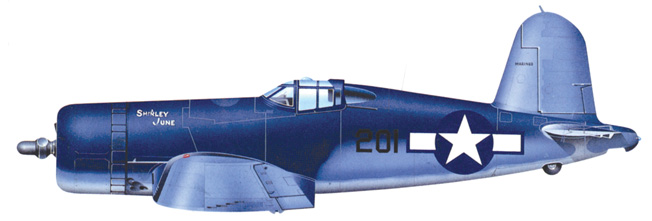
Marine Corps Adoption: The Navy’s rejection of the Corsair as a fleet fighter led to its adoption by the USMC. While the Navy opted for the Grumman F6F Hellcat, the Marines found in the Corsair a solution to their need for a high-performance aircraft in the Pacific theater. The F4U’s capabilities, especially as an escort and ground-attack aircraft, played a crucial role in the early days of the war when Marines faced the challenges of obsolete aircraft.
First Combat and Aces: VMF-124 became the first Marine squadron to receive F4U Corsairs, deploying to Guadalcanal in 1942. The squadron’s combat experiences highlighted the Corsair’s versatility and potential. Ken Walsh emerged as the first Corsair ace, showcasing the aircraft’s prowess in air-to-air combat. Despite initial setbacks and challenges, the Corsair’s combat performance dispelled the myth of Japanese air superiority.
The Black Sheep Squadron: VMF-214, famously known as The Black Sheep Squadron, gained notoriety under the command of Major Gregory Boyington. Despite a fictionalized portrayal in the Black Sheep Squadron TV series, the squadron’s combat record was impressive, with over 200 Japanese planes destroyed or damaged. Boyington, a contentious figure with a colorful past, led the squadron to significant victories, cementing the Corsair’s legacy in the Pacific theater.
Charles Lindbergh’s Role: The F4U Corsair program saw an unexpected participant in famed aviator Charles Lindbergh. Initially sidelined due to political reasons, Lindbergh joined the Corsair program, eventually becoming a technical representative. His combat missions in the Pacific, unconventional for a civilian, provided valuable insights and contributed to the Corsair’s evolving tactics. Lindbergh’s influence extended to optimizing the Corsair’s capabilities, demonstrating its ability to carry larger bomb loads and conserving fuel for extended combat ranges.
Conclusion: The F4U Corsair’s journey from development challenges to combat triumphs reflects its pivotal role in shaping the narrative of World War II aviation. With its distinctive design and the contributions of notable figures like Boyington and Lindbergh, the Corsair remains an iconic symbol of Marine Corps Aviation and a testament to innovation in the face of adversity.
The demonstration of the F4U Corsair’s carrier-borne capabilities by the Royal Navy marked a pivotal moment in the aircraft’s operational history. Initially designed for fleet operations, the F4U Corsair spent over a year restricted to land bases with Marine squadrons. However, the innovative approach taken by Royal Navy pilots showcased the aircraft’s adaptability for carrier use.
To craft a new article while maintaining the essence and length of the original, we can delve into the significance of the Royal Navy’s role in proving the F4U’s carrier capabilities and explore the subsequent adoption of this method by the U.S. Navy.
Title: Unveiling the Carrier Prowess of the F4U Corsair: A Royal Navy Triumph
The F4U Corsair, initially acclaimed for its performance by Marine squadrons, was destined for carrier operations. However, it wasn’t until the Royal Navy stepped in that the aircraft’s full carrier-borne potential was realized. British pilots, with an astute understanding of naval aviation, ingeniously devised a unique landing method that became a game-changer for the Corsair.
Instead of conforming to the traditional landing procedure, British aviators adopted a curving approach. This maneuver allowed them to maintain visual contact with the landing signals officer until the last moment, ensuring a seamless engagement with the carrier deck. The simplicity of cutting power and relying on arresting gear eliminated the need for taxing, streamlining carrier operations.
This breakthrough did not go unnoticed by the U.S. Navy, leading to the integration of this method in some fighter squadrons, most notably VF-17, famously known as the Jolly Rogers. VF-17, initially slated for carrier deployment, found itself redirected to land-based duty due to logistical challenges unique to Corsair squadrons. However, their remarkable success in operating off carriers laid the foundation for the Corsair’s future carrier-centric role.
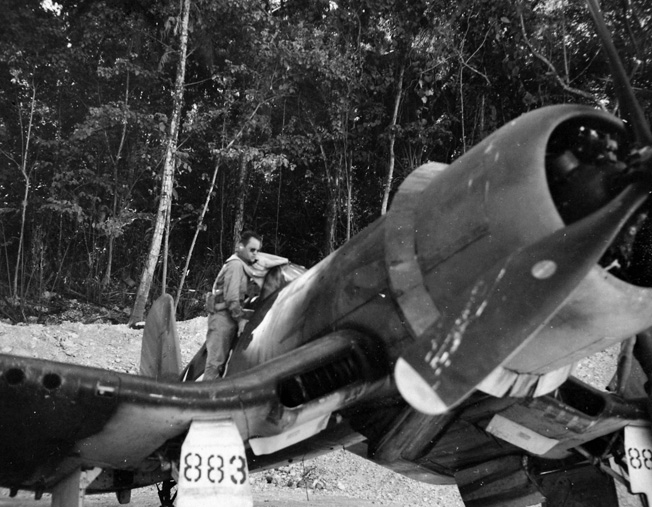
As the theater of war shifted towards the Pacific, Corsairs became integral to critical campaigns, particularly the Battle of Rabaul. VF-17’s pivotal role in neutralizing Rabaul showcased the Corsair’s adaptability from carrier-based interceptors to ground-attack aircraft. The close air support mission, initially underappreciated, gained prominence after the Battle of Bloody Ridge, where Corsairs played a decisive role in supporting Marine ground troops.
The transition of the F4U Corsair into the primary close air support aircraft for the Navy by late 1944 marked a strategic shift. With the Solomons campaign concluded, Marine fighter squadrons were reassigned to fleet duties, emphasizing the Corsair’s importance in providing air support during amphibious operations. The Corsair’s debut in the assault on Iwo Jima exemplified its effectiveness in the ground-attack role, showcasing its adaptability beyond traditional aerial combat.
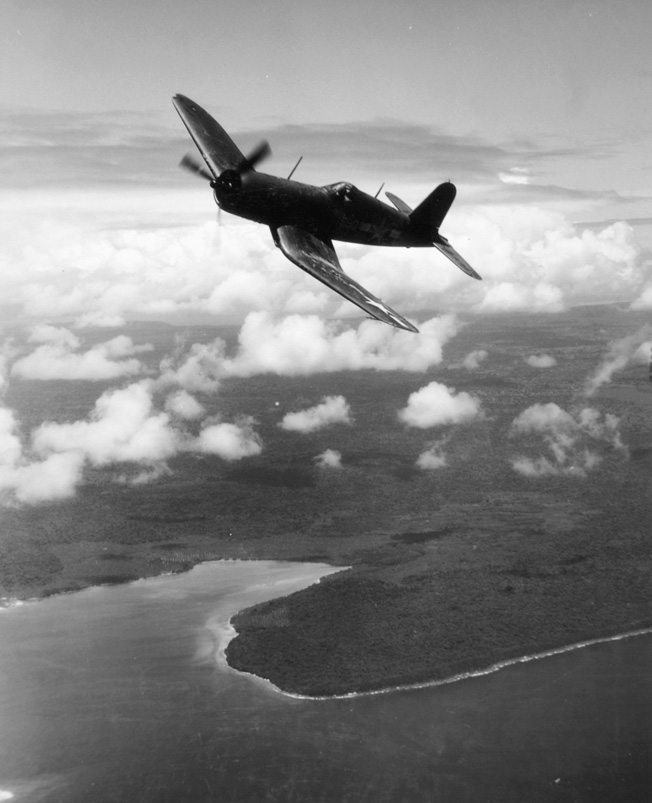
The Corsair’s combat narrative extended to the Philippines, where Marine squadrons actively engaged in close air support missions. Despite initial reservations about integrating air support with ground operations, Corsairs played a vital role in supporting guerrilla units on Mindanao and northern Luzon, providing firepower crucial for overcoming heavy enemy resistance.
As the Pacific War progressed, the Corsair faced a new adversary – the kamikaze threat. The aircraft’s superior speed and climb performance made it the Navy’s primary choice for intercepting these suicide missions. Commander John S. Thach’s innovative tactics, including the “big blue blanket,” proved instrumental in minimizing the impact of kamikaze attacks during the Battle of Okinawa.
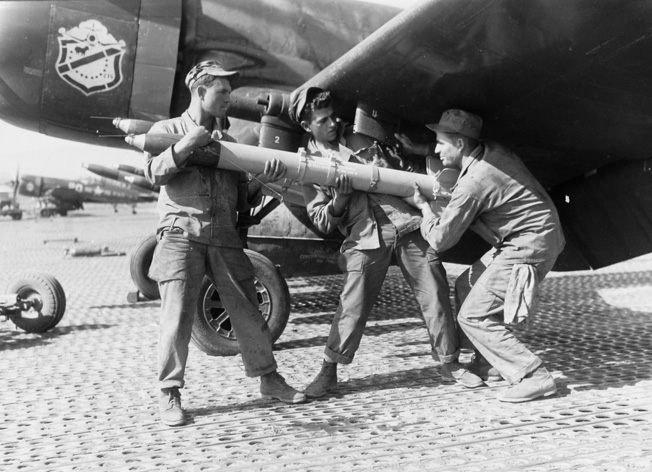
The Corsair’s legacy extended beyond World War II, with various Allied nations, including the British Royal Navy, the New Zealand Air Force, and post-war France, recognizing its capabilities. The aircraft continued production even after the war, showcasing its longevity and adaptability. However, despite its impressive statistics, the Corsair’s role evolved, with post-war usage emphasizing ground-attack missions and its eventual retirement after the Korean War.
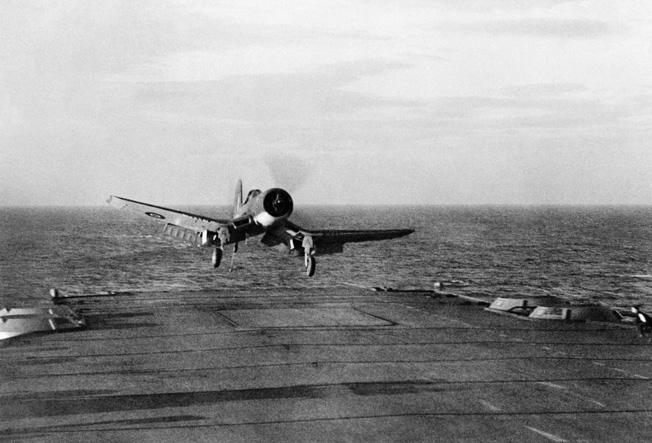
In conclusion, the F4U Corsair’s journey from a Marine favorite to a carrier-borne, close air support powerhouse highlights its adaptability and pivotal role in shaping naval aviation during World War II and beyond.

